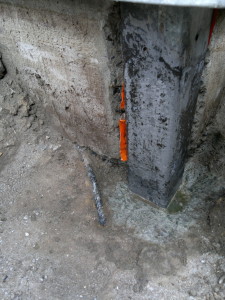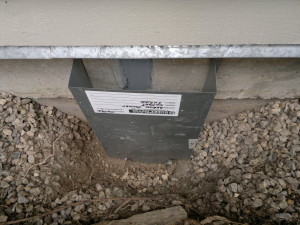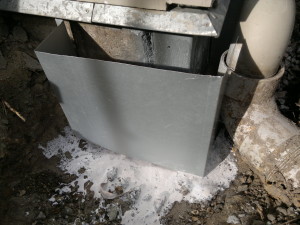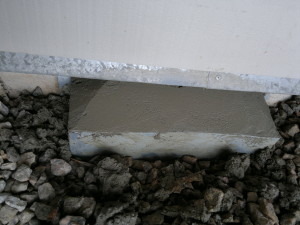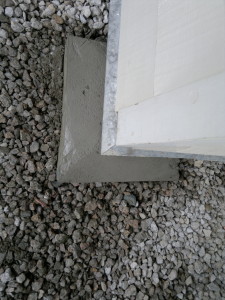WILL IT EVER RAIN AGAIN? WILL THIS QUEENSLAND DROUGHT EVER BREAK? First published Nov 21 2019.
Of course it will.
WILL IT EVER RAIN SUFFICIENTLY AGAIN ?
Possibly not.
OUR CLIMATE IS NOTORIOUS; ‘land of drought and flooding rains’, but the overall trend is to more drought and less rain. Concerning rain, it seems the events are as regular as ever, within the limits of our short history of weather-recording, but the amount of rain that falls during those events seems to be diminishing. Rain periods are increasing in intensity and decreasing in duration.
As a large island in the middle of a vast roaring ocean and huge weather-systems, it is a mysterious fact that usually these systems swirl around Australia like a river around a rock. As if the land-mass repels the rain-clouds.
In the Northern Hemisphere, for example, the lands exposed to to the Atlantic Ocean and the prevailing Westerlies, are constantly soaked as rain-clouds roll on their course. Those clouds do not veer away, leaving Ireland as a desert.
The Westerlies that could bring regular soaking rain to the exposed Australian coast almost always are repelled by the land. A constant feature of satellite images of Australia shows cloud-formations swirling around and away from the coast, seldom crossing the country. Why is this so? What phenomenon diverts the prevailing gyres away from the land-mass?
One would expect this continent, which sits un-sheltered in the midst of swirling storms, to be a land of constant tropical rains, and carpeted with jungle from coast to coast. And those jungles do exist in North Queensland, as do giant eucalypts in Tasmania, but the majority of the country is desert-dry, and the coastal fringe not much greener.
It is true that high mountain ranges cause local rainfall, and that most of Australia is flat. As Henry Lawson says in Some Popular Australian Mistakes, ‘There are no “mountains” out West, only ridges on the floors of hell’. Rainclouds that do penetrate the coastline continue on their course without interruption, retaining their moisture, causing deserts. This is the current reasoning. However, the very aspect of this land features water-leveled plains, and where small hills and ranges do exist there are wide valley-bottoms; all created by rainfall of huge extent. To form a level plain out of mountain ranges requires not time, of which there is plenty, but non-stop rainfall. At one time, every level plain bounded by ranges of hills must regularly have flooded to great depth, in order to both erode the hills and deposit the flood-silt.
These floodings obviously have not occurred within any geological period recognised, and possibly not since human settlement. To extend the puzzle, Australian coal-fields certainly are dateable, to when the country existed in a different location on the planet, in an atmosphere rich in carbon dioxide, with weather of staggering rainfall.
Our planet has changed as CO2 has been depleted. Vegetation is less successful. But why, in certain defined areas, has rainfall either decreased or increased dramatically? Australia has definitely lost most of its rainfall. Has this been a sudden or a gradual decline? Is rainfall itself governed to any extent by CO2 levels? What is the real reason for the Queensland drought today?
Why do these events happen? When one area of the globe suffers a prolonged period of rain, and another area drought? And why is Australia becoming progressively more dry? Climate agencies have since the 1950s benefited from increasing scientific data, as can be seen from the proliferation of weather-based acronyms, and the predictions are worrying. Adverse climate-change seems to be our fault. But the long-term history of climate needs to be examined.
So, considering this, the long-term; given sufficient rainfall, any area of sterile sand will grow massive forest; no soil-nutrients necessary, no humus formed. Rainfall equals tree-cover in warmer climates. Where has the rain gone in Australia? It used to be there, and has gone; shrunk to the north and south extremities, and still shrinking, it seems, even in our short recorded history. And the Queensland drought rolls on.
Note, recorded.
The ocean gyres of rain-clouds avoid the land-mass of Australia. Why? What is the repellent force that steers most rain away from the coast? Why, sometimes, do rain-formations actually traverse Australia, bucking the trend? How much, and why, does Sudden Stratospheric Warming change our weather, and how permanent are these changes? The Drying of Australia is a problem yet to be solved.
Not ‘where’ has the rain gone, but ‘why’.
Weather forecasting and prediction of rainfall-trends in Australia is based on information collected from 1900, with accuracy increasing from about 1950. The trends are there to be accessed by all, the patterns of change apparent. But what of pre-industrial trends, and pre-settlement 50,000 years ago? What has been happening to the climate of Australia prior to human occupation?
Mention was made of the floods affecting Brisbane in 2010/2011, in a previous blog. A small area received water-bourne silt to a depth varying between ten and twenty centimetres. Valuable top-soil, but un-appreciated by the recipients. All the current agricultural plains in Australia were created this way: deep floods and deposited silt. The critical question: are these deposits dateable? Is there a signature within the silt-layer which could be translated to a year, or era? We have an excellent test-sample to examine within the Yerongpilly and surrounding area in Brisbane. This top-soil was created exactly in 2011. Other floods at other places since European settlement have left dateable silt.
Excavation of any level plain will reveal strata of silt deposits which may be measured for each flooding event, from surface to bedrock, with possible interruptions due to meandering creek-beds, etc.. But can these individual deposits be dated? If so, the information would give a true and exact record of climate and its change over time. We would discover real trends prior to industry, to European settlement, and to human occupation, and major questions could be answered concerning the drying of any area and the time-scale involved.
Information of climate trends prior to, and during these three periods is vital to current concept of climate. Can this information be accessed through geology? Radiocarbon and photoluminescence dating is apparently difficult for shallow silt layers exposed at the surface. Dating of surviving vegetable material is possible and accurate, but rarely available, especially at depth.
The dating of each flood-deposit layer, and an estimation of the depth of floodwater responsible, would open a window onto the real climate of the past at any time and place, and answer so many questions concerning our responsibility for climate-change.
How informative to actually know the date and extent of the rains that caused the deposits of silt on valley farm-land. And the pattern of floods through time, from most recent to ancient. Can it be done? Is it possible?



